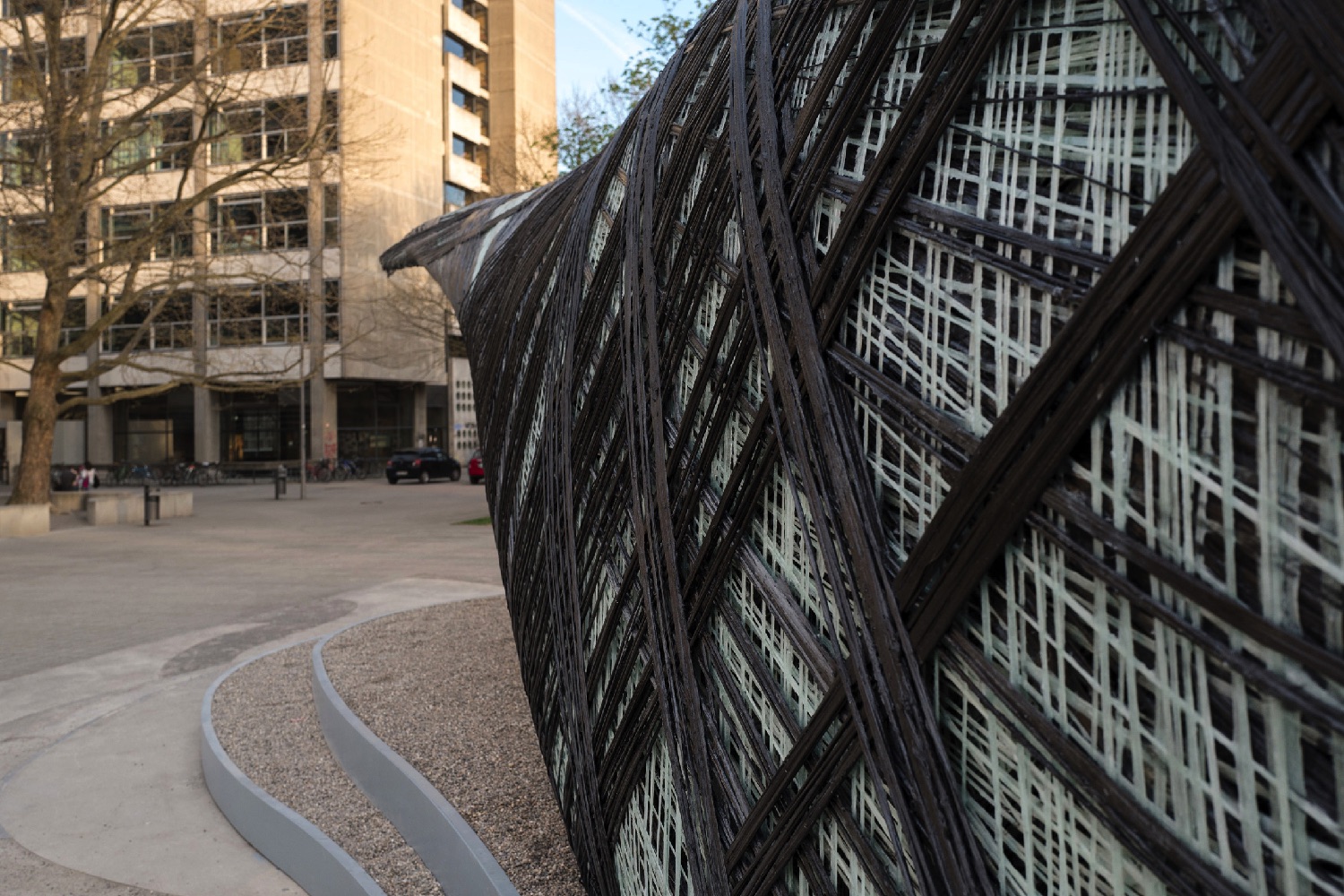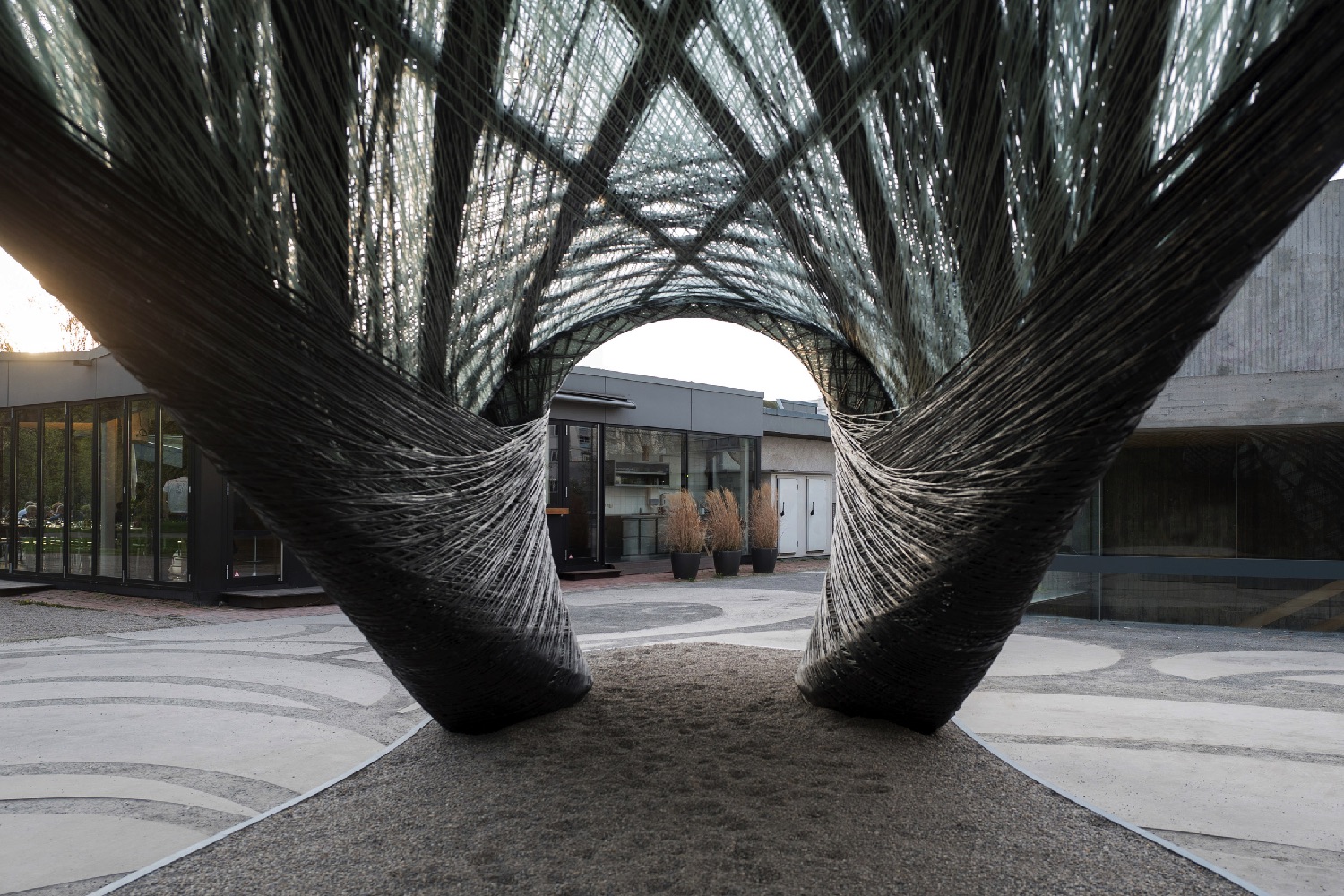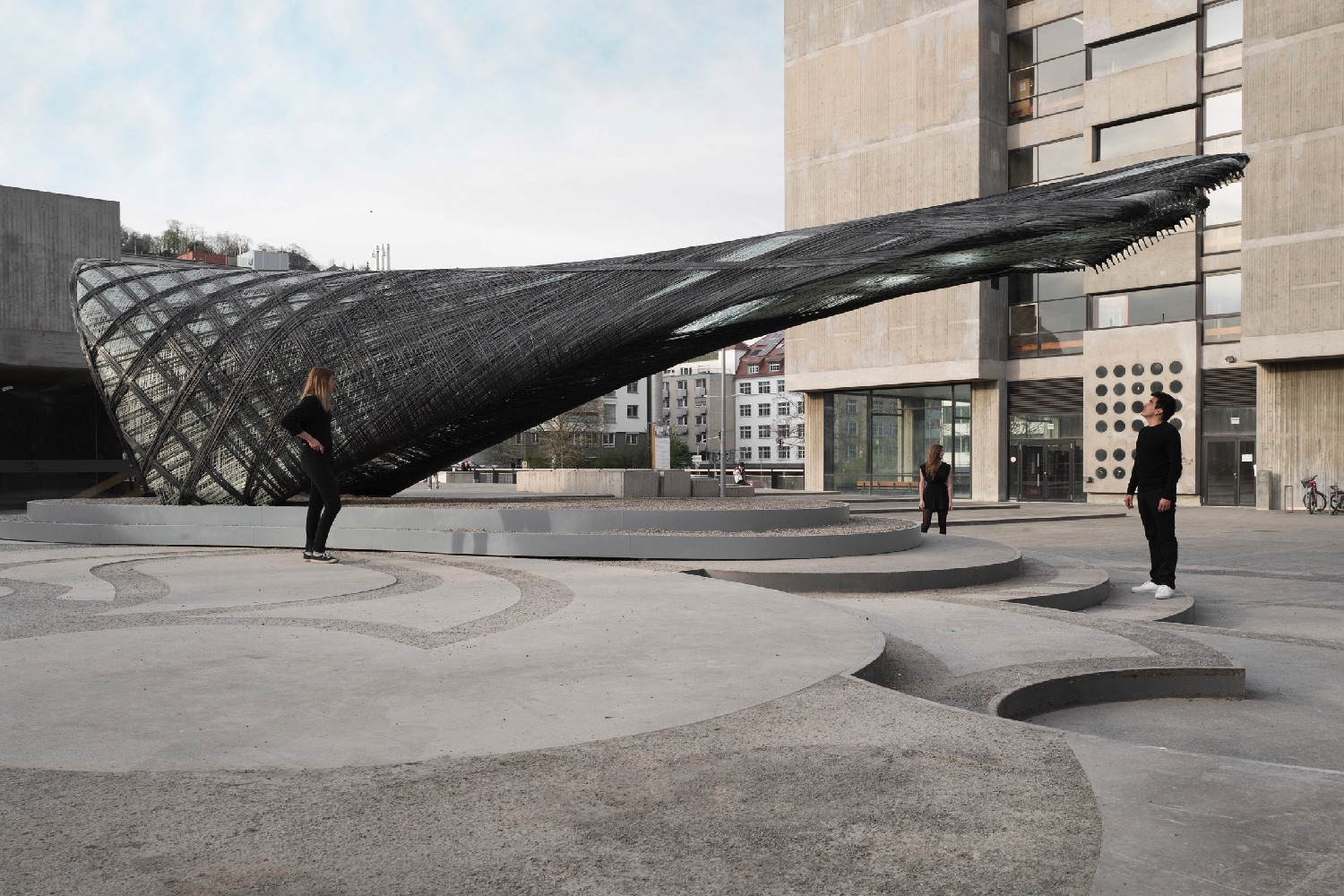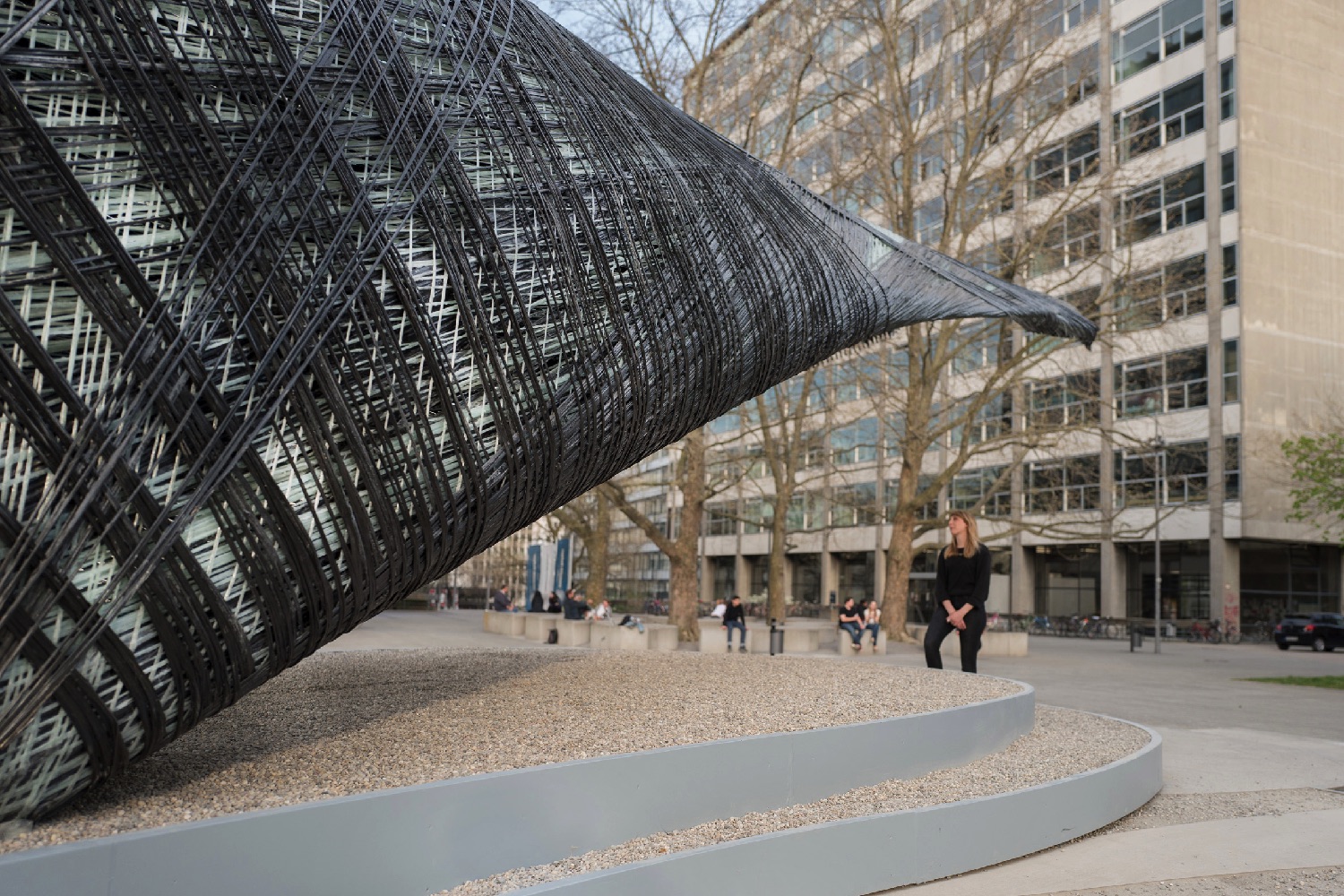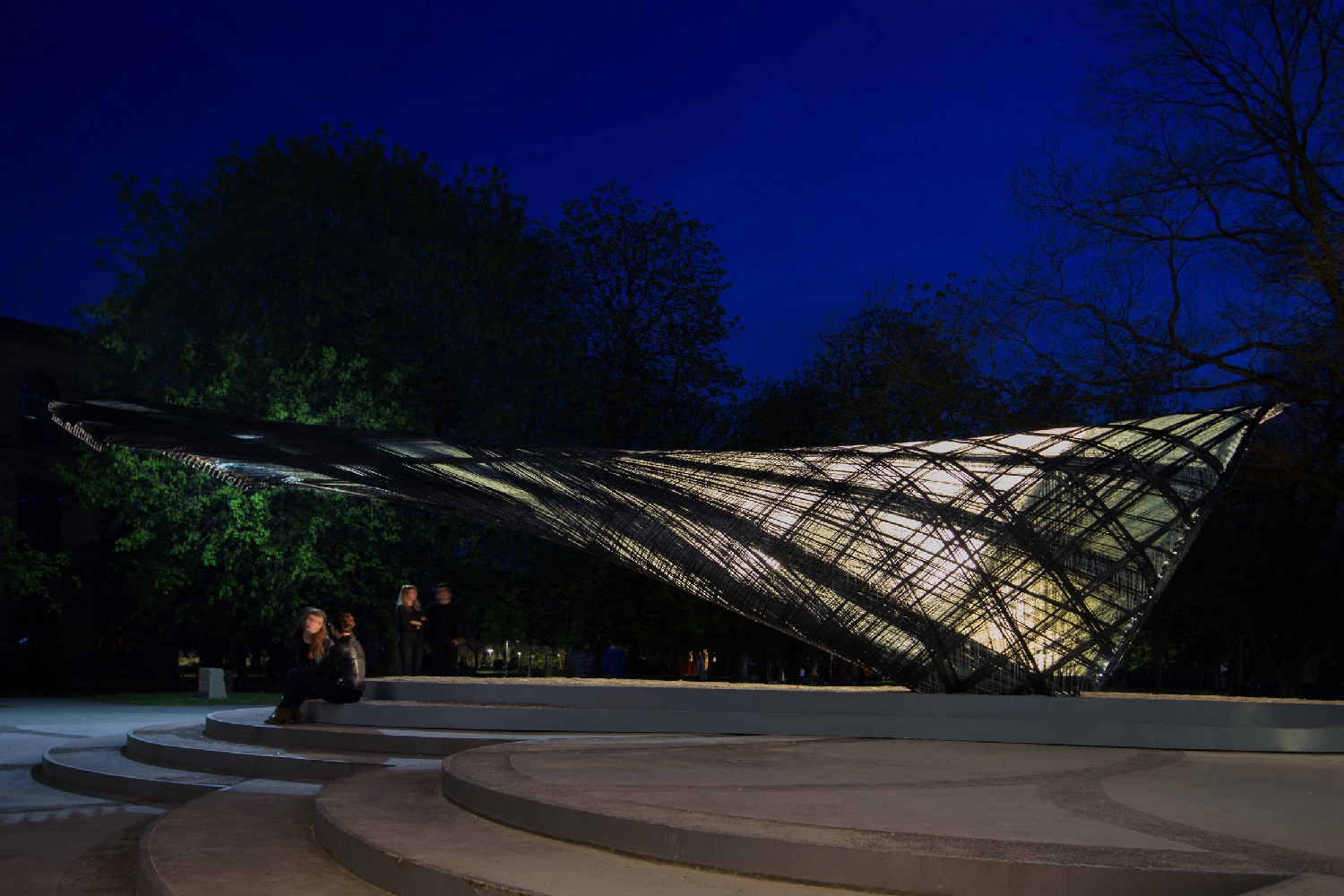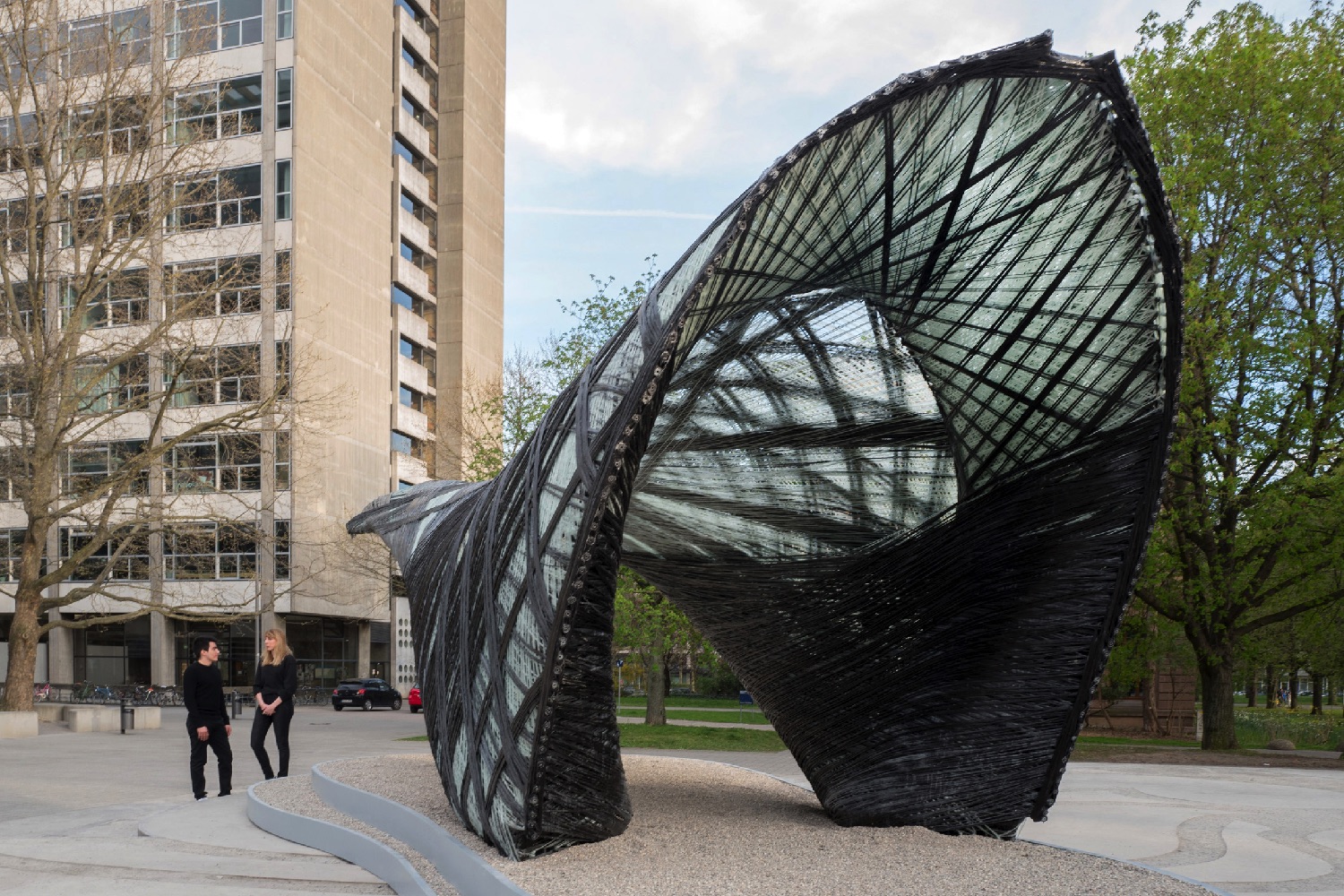Resembling a piece of otherworldly landscape from Ridley Scott’s classic movie Alien, the 40-foot-long pavilion was constructed using a combination of cutting-edge drones and robots.
Its design was modeled on the silk hammocks created by moth larvae, and produced using more than 180 kilometers of woven resin-impregnated glass and carbon-fiber.
“Creating a long span structure, beyond the working space of standard industrial fabrication equipment, required a collaborative setup where multiple robotic systems could interface and communicate to create a seamless fiber laying process,” the University of Stuttgart’s website explains. “A fiber could be passed between multiple machines to ensure a continuous material structure. The concept of the fabrication process is based on the collaboration between strong and precise, yet stationary machines with limited reach and mobile, long-range machines with limited precision.”
The construction process involved two stationary industrial robotic arms with the strength and precision necessary for the fiber-winding work, while a drone carried out the fiber-laying process.
“The UAV could fly and land autonomously without the need of human pilots, the tension of the fiber was actively and adaptively controlled in response to both the UAV and robot behaviors,” the website continues.
Sure, we’re unlikely to reach a point any time soon when robots and drones carry out the bulk of building work. However, work like this shows that it’s certainly an available option if called for. “The series of adaptive behaviours and integrated sensors lay the foundation for developing novel multi-machine, cyber-physical fabrication processes for large scale fibre composite production,” the creators note.
Hey, it’s hard to argue with the quality of the results. Or to think of a way a human team could’ve so easily carried out the task!
Editors' Recommendations
- Amazon’s new humanoid robot will not take human jobs, company insists
- Robots deployed to assist New York City police … again
- Drone delivery leader Wing heads to new country for next pilot program
- Spot’s latest robot dance highlights new features
- Space station’s new robotic arm springs to life
